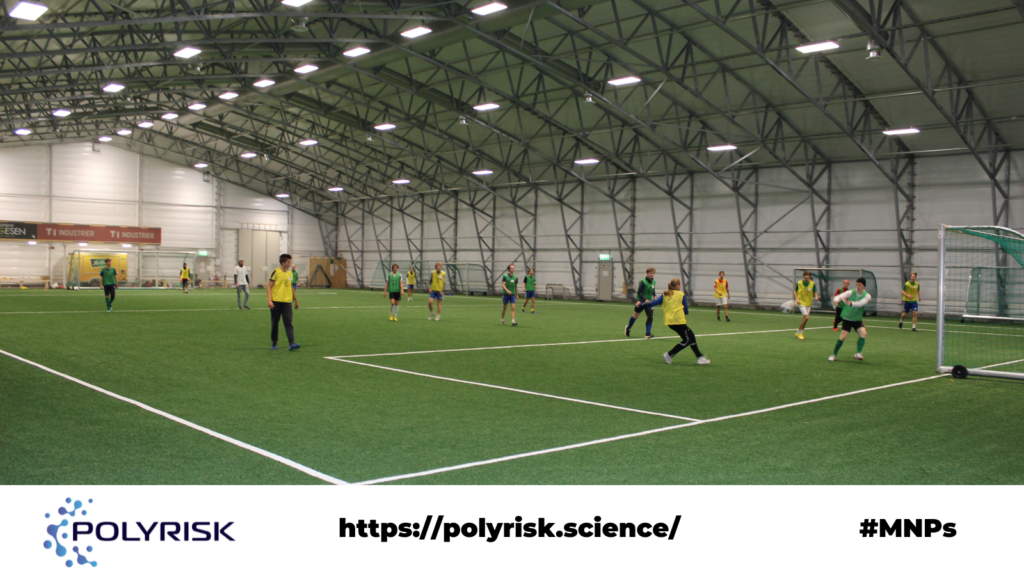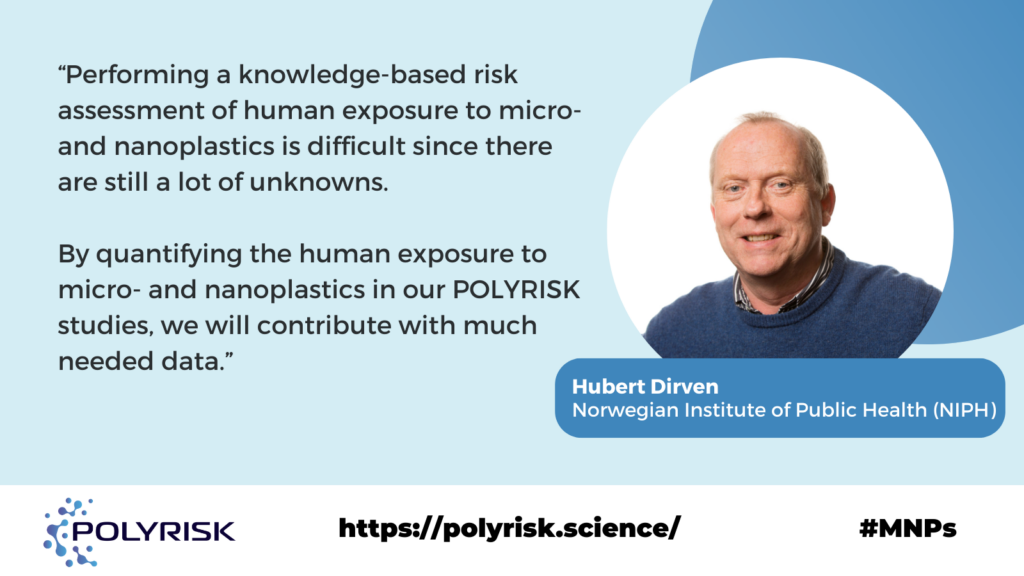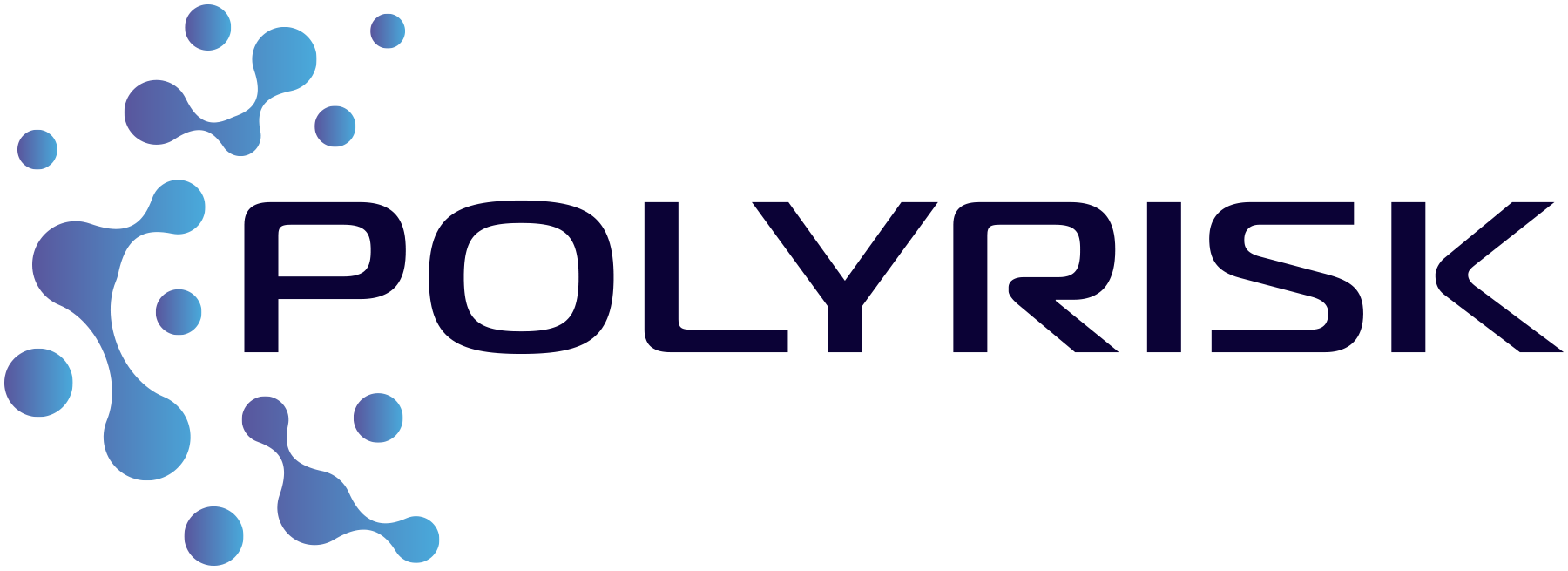Every day, millions of people living in Europe play on indoor and outdoor artificial grass sports pitches that use rubber granules as infill materials. While this soft infill makes the pitches more durable, weather-proof and better to absorb shocks, rubber granules are a significant source of micro- and nanoplastics to the environment. The POLYRISK project carried out a study to investigate whether these plastic particles found on indoor artificial grass sports pitches are taking up in the body and can affect people’s immune system.
Granules used as infill material on artificial sports pitches are commonly made from car tires, as well as from industrial rubber or various types of plastics. According to the Norwegian Environment Agency, artificial sports pitches that use rubber granules as infill in particular are a significant source of microplastic emissions as these granules break down into tiny particles that spread around the environment by mixing with water and into the soil. In Europe each year around 42,000 tonnes of microplastics end up in the environment, with granular infill being the largest single source of pollution with estimated releases of up to 16,000 tonnes per year.

Studying real-life exposure to microplastics found on artificial grass sports pitches
While evidence of the presence of microplastics within our bodies exists, there is limited knowledge about the possible health effects of the microplastics that people are exposed to on a daily basis. The POLYRISK project examines occupational and consumer exposure to microplastics to better understand their potential adverse effects on the immune system. In a dedicated Work Package of POLYRISK, external and internal exposures of micro- and nanoplastic particles in humans are studied in five real-life scenarios – settings selected to study the link between the exposures and possible changes in the immune system.
One of such studies into real-life exposure to microplastics was recently completed by POLYRISK partner the Norwegian Institute of Public Health (NIPH). Through their ‘Football Field’ study, researchers from NIPH set out to investigate whether inhalation of micro- and nanoplastics found in indoor halls with artificial grass turfs can affect the immune response of healthy players.
In the fall of 2022, NIPH coordinated two sets of football matches to be played as part of their study of artificial indoor sport fields. The study was done with support from the Norwegian Soccer Organisation who helped in selecting the indoor halls and in the initial planning. Thirty-eight male and female participants aged 16 to 19 years played matches on indoor artificial grass pitches with different types of infill material. The 90-minute matches were held in two different locations in and around Oslo and took place 14 days apart. Participants played a match on artificial turf grass with olive sand or with rubber granule infill , to test the theory that more micro- and nanoplastic particles would be found in the air of the artificial grass pitches with rubber infill versus those with olive sand infill. A team of 25 people from NIPH was involved during each match. They collected air samples to examine the amount and type of micro- and nanoplastics found in the air in the different pitches. They also collected and processed various biological samples from the players (blood, urine, and saliva) before and after each match in order to later examine and compare the immune response after the games, based on the effects of exposure to micro- and nanoplastic particles.
Now that the data have been collected, NIPH and other POLYRISK project partners such as Vrije University Amsterdam (VU), Italian National Agency for New Technologies, Energy and Sustainable Economic Development (ENEA), Federal Institute for Occupational Safety and Health (BAUA), and University of Utrecht (UU) will be conducting different analyses of the air filters and biological samples, with the first results expected in the autumn 2023. These outputs will feed into the risk assessment of human exposure to micro and nanoplastics, by studying both exposure and biological effects. The ultimate goal of the POLYRISK project is to improve the risk assessment of human exposure to micro- and nanoplastics.
“Performing a knowledge based risk assessment of human exposure to micro- and nanoplastics is difficult since there are still a lot of unknowns. By quantifying the human exposure to micro- and nanoplastics in our POLYRISK studies, we will contribute with much needed data”, says Hubert Dirven, department director at NIPH and co-leader of this work package.

Contributing to European policy proposals to ban microplastics
In late April 2023, EU member states approved a proposal at a REACH Committee to ban intentionally-added substances like microplastics, when used on for example sports fields and in cleaning products, as a result of their negative environmental impact. The proposal also targets products derived from old tires, like the rubber granules used as infill materials on artificial football pitches being studied by POLYRISK.
The text of the proposal is now under review by the European Parliament and the Council as part of the last stage of the EU adoption process. By studying people’s exposure to micro- and nanoplastic particles to better understand their potential harmful effects on the immune system, POLYRISK aims to contribute to this important policy development.
